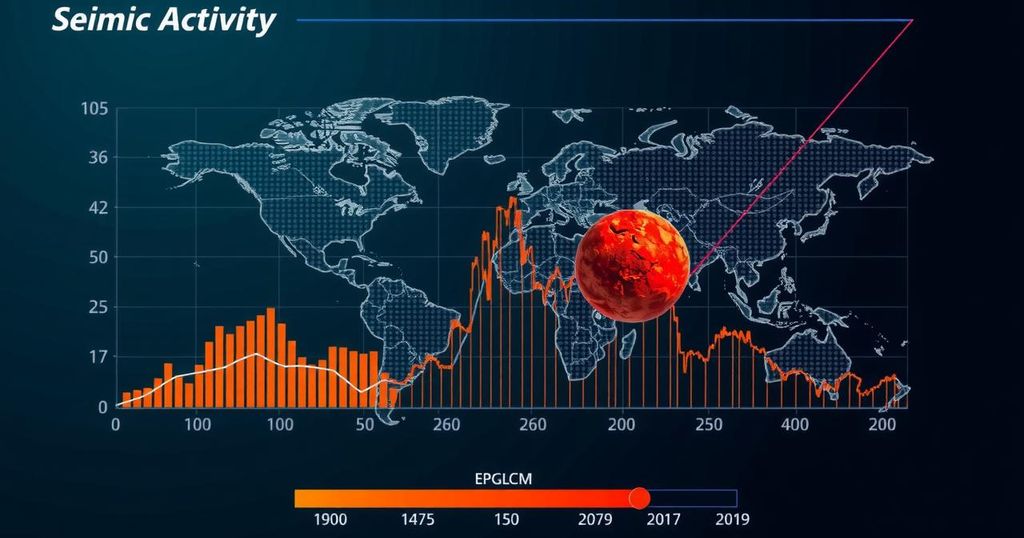6.2 Magnitude Earthquake Occurs in Chile Amid Global Seismic Activity

On November 8, 2024, a 6.2-magnitude earthquake struck Cochrane, Chile, at a depth of 10 kilometers. This event followed a sequence of seismic activities in Peru, California, Greece, and Hawaii, reflecting a pattern of global earthquake occurrences. The USGS confirmed multiple felt reports, underscoring the significance of these events amidst ongoing tectonic movements.
On November 8, 2024, a significant seismic event occurred in Chile, registering a magnitude of 6.2 according to the United States Geological Survey (USGS). This earthquake was located in Cochrane, with its epicenter at a depth of approximately 10 kilometers (6.2 miles). Reports indicated that at least 50 individuals experienced the tremor as per the USGS’s findings at the time of the report’s publication. This occurrence in Chile followed a 5.0-magnitude earthquake in Peru on November 7, specifically centered in Changuillo at a depth of 54.8 kilometers (34 miles). Additionally, the sequence of seismic activities included a 4.4-magnitude earthquake in California, recorded in Borrego Springs at a depth of 9.8 kilometers (6 miles), further underscoring the prevalence of seismic activity in multiple regions. Moreover, these recent earthquakes are part of a broader trend of seismic activities worldwide, which also included a 4.4-magnitude earthquake in Greece on November 5, located in Chalandrítsa at a depth of 82.3 kilometers (51.1 miles). The seismic events in Greece and Hawaii reflect the dynamic geological nature of the planet, with the Hawaii earthquake registering at 4.8 magnitude, centered in Pāhala. As these earthquakes occurred closely together in time and space, they indicate the ongoing and interconnected nature of tectonic movements around the globe. The significant depths and magnitudes of these quakes highlight the diverse geological challenges faced in various countries, from South America to the United States and beyond.
The phenomenon of earthquakes is a natural result of tectonic shifts beneath the Earth’s crust. Seismic activity is frequently monitored by the United States Geological Survey, which documents not only the magnitude of the earthquake but also its epicenter and depth. Chile, Peru, California, Greece, and Hawaii are all regions that display seismic vulnerabilities due to their geographic positioning along tectonic plate boundaries. The recent series of earthquakes underscores the importance of disaster preparedness and the need for ongoing research in seismology to mitigate potential risks associated with such natural events.
In conclusion, the recent earthquakes around the world, particularly the 6.2-magnitude event in Chile, signify a pattern of notable seismic activity. With multiple regions experiencing tremors in close succession, it emphasizes the necessity of continuous monitoring and research. The geological landscape remains dynamic, presenting both challenges and the need for preparedness across affected areas. Authorities and communities must remain vigilant and informed about potential seismic threats.
Original Source: www.iheart.com




